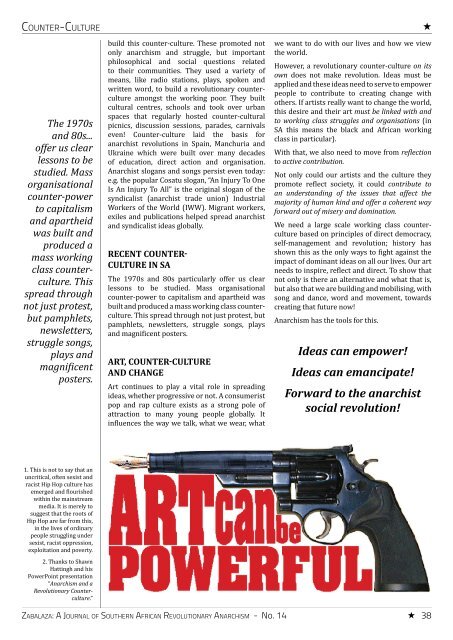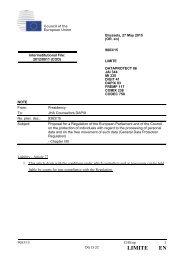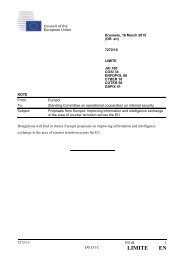[BCBMB[B
zabalaza14
zabalaza14
You also want an ePaper? Increase the reach of your titles
YUMPU automatically turns print PDFs into web optimized ePapers that Google loves.
COUNTER-CULTUREThe 1970sand 80s...offer us clearlessons to bestudied. Massorganisationalcounter-powerto capitalismand apartheidwas built andproduced amass workingclass counterculture.Thisspread throughnot just protest,but pamphlets,newsletters,struggle songs,plays andmagniicentposters.build this counter-culture. These promoted notonly anarchism and struggle, but importantphilosophical and social questions relatedto their communities. They used a variety ofmeans, like radio stations, plays, spoken andwritten word, to build a revolutionary countercultureamongst the working poor. They builtcultural centres, schools and took over urbanspaces that regularly hosted counter-culturalpicnics, discussion sessions, parades, carnivalseven! Counter-culture laid the basis foranarchist revolutions in Spain, Manchuria andUkraine which were built over many decadesof education, direct action and organisation.Anarchist slogans and songs persist even today:e.g. the popular Cosatu slogan, “An Injury To OneIs An Injury To All” is the original slogan of thesyndicalist (anarchist trade union) IndustrialWorkers of the World (IWW). Migrant workers,exiles and publications helped spread anarchistand syndicalist ideas globally.RECENT COUNTERCULTURE IN SAThe 1970s and 80s particularly offer us clearlessons to be studied. Mass organisationalcounter-power to capitalism and apartheid wasbuilt and produced a mass working class counterculture.This spread through not just protest, butpamphlets, newsletters, struggle songs, playsand magniicent posters.ART, COUNTERCULTUREAND CHANGEArt continues to play a vital role in spreadingideas, whether progressive or not. A consumeristpop and rap culture exists as a strong pole ofattraction to many young people globally. Itinluences the way we talk, what we wear, whatwe want to do with our lives and how we viewthe world.However, a revolutionary counter-culture on itsown does not make revolution. Ideas must beapplied and these ideas need to serve to empowerpeople to contribute to creating change withothers. If artists really want to change the world,this desire and their art must be linked with andto working class struggles and organisations (inSA this means the black and African workingclass in particular).With that, we also need to move from relectionto active contribution.Not only could our artists and the culture theypromote relect society, it could contribute toan understanding of the issues that affect themajority of human kind and offer a coherent wayforward out of misery and domination.We need a large scale working class counterculturebased on principles of direct democracy,self-management and revolution; history hasshown this as the only ways to ight against theimpact of dominant ideas on all our lives. Our artneeds to inspire, relect and direct. To show thatnot only is there an alternative and what that is,but also that we are building and mobilising, withsong and dance, word and movement, towardscreating that future now!Anarchism has the tools for this.Ideas can empower!Ideas can emancipate!Forward to the anarchistsocial revolution!1. This is not to say that anuncritical, often sexist andracist Hip Hop culture hasemerged and lourishedwithin the mainstreammedia. It is merely tosuggest that the roots ofHip Hop are far from this,in the lives of ordinarypeople struggling undersexist, racist oppression,exploitation and poverty.2. Thanks to ShawnHattingh and hisPowerPoint presentation“Anarchism and aRevolutionary Counterculture.”ZABALAZA: A JOURNAL OF SOUTHERN AFRICAN REVOLUTIONARY ANARCHISM - No. 14 38







